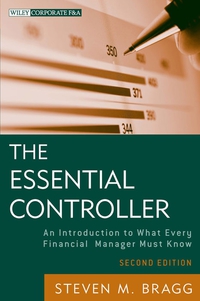Decision Analysis for management judgement chapter 8, question 4.

(4) (This exercise is really designed to be carried out by a group of people, with each (b) Compare the risk analysis could be made between them. results specialized set of random numbers. The then be combined by using the table at the end of the question.) An equipment hire company has to decide whether to buy a of earth-digging machinery for $6000. The machine would be sold after two years. The main factors which it is thought will affect the return on the invest. ment are: (i) The revenue generated by hiring the machine out for a day; it is certain that this will be $40. (ii) The number of days that the machine will be hired out in year 1 and in (iii) The costs of having the machine available for hire (e.g., maintenance and repair costs) in year 1 and year 2. (iv) The price which will be obtained for the machine when it is sold at the end of year 2. For each factor the following probability distributions have been estimated: year 2 No. of days hired out in year 1 Prob. (%) No. of days hired out in year 2 under 100 100 to under 200 200 to under 300 30 50 20 (This is assumed to have the same distribution as year 1) Annual costs ($) Prob. in year 1 (%) Prob. in year 2 (%) 50 30 1000 to under 2000 2000 to under 3000 3000 to under 4000 30 40 20 30 EXERCISES 217 Selling price ($) Prob. (%) 1000 to under 2000 2000 to under 3000 40 60 Carry out one simulation of a possible combination of circumstances and calcu- late the NPV for your simulation. Use a discount rate of 10%. The results for the entire group can then be entered into the following table: No. of simulations resulting in NPVs in Net present value ($) this range Probability -15000 to under 0 O to under 5000 5000 to under 10 000 10 000 to under 15 000 Therefore, the most likely range for the NPV appears to be ... ... and the proba- bility of a negative NPV appears to be ...... homical comnany have to decide whether to extend their (4) (This exercise is really designed to be carried out by a group of people, with each (b) Compare the risk analysis could be made between them. results specialized set of random numbers. The then be combined by using the table at the end of the question.) An equipment hire company has to decide whether to buy a of earth-digging machinery for $6000. The machine would be sold after two years. The main factors which it is thought will affect the return on the invest. ment are: (i) The revenue generated by hiring the machine out for a day; it is certain that this will be $40. (ii) The number of days that the machine will be hired out in year 1 and in (iii) The costs of having the machine available for hire (e.g., maintenance and repair costs) in year 1 and year 2. (iv) The price which will be obtained for the machine when it is sold at the end of year 2. For each factor the following probability distributions have been estimated: year 2 No. of days hired out in year 1 Prob. (%) No. of days hired out in year 2 under 100 100 to under 200 200 to under 300 30 50 20 (This is assumed to have the same distribution as year 1) Annual costs ($) Prob. in year 1 (%) Prob. in year 2 (%) 50 30 1000 to under 2000 2000 to under 3000 3000 to under 4000 30 40 20 30 EXERCISES 217 Selling price ($) Prob. (%) 1000 to under 2000 2000 to under 3000 40 60 Carry out one simulation of a possible combination of circumstances and calcu- late the NPV for your simulation. Use a discount rate of 10%. The results for the entire group can then be entered into the following table: No. of simulations resulting in NPVs in Net present value ($) this range Probability -15000 to under 0 O to under 5000 5000 to under 10 000 10 000 to under 15 000 Therefore, the most likely range for the NPV appears to be ... ... and the proba- bility of a negative NPV appears to be ...... homical comnany have to decide whether to extend their









